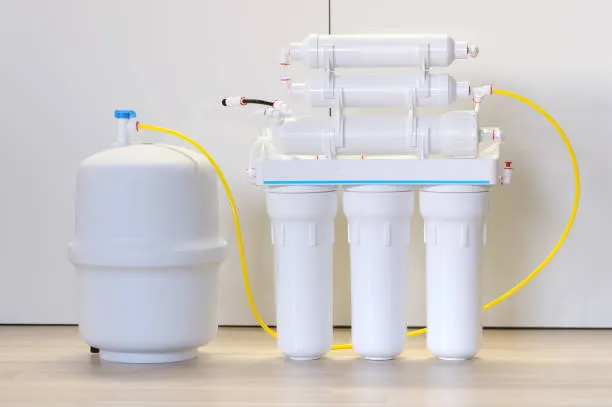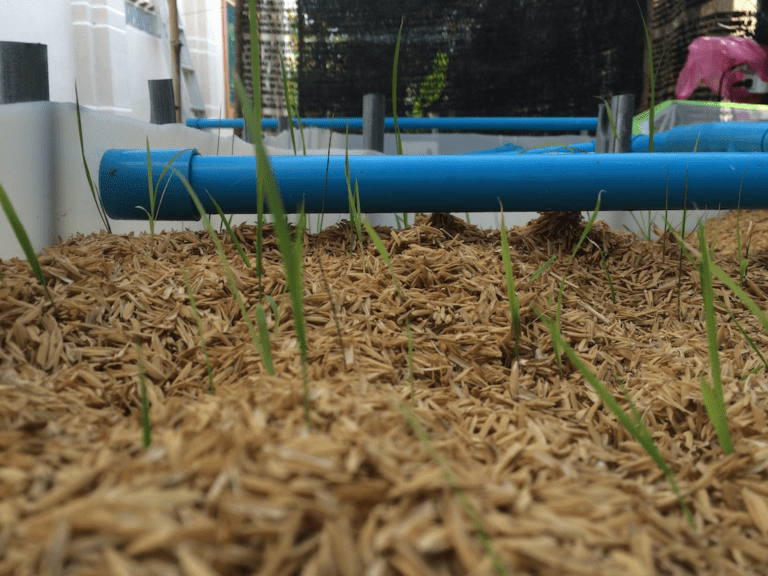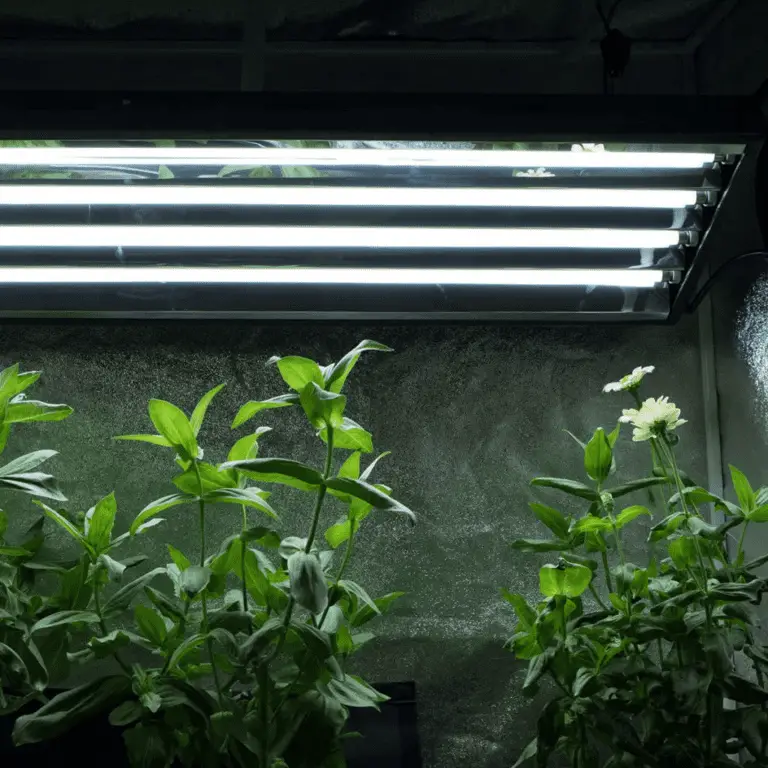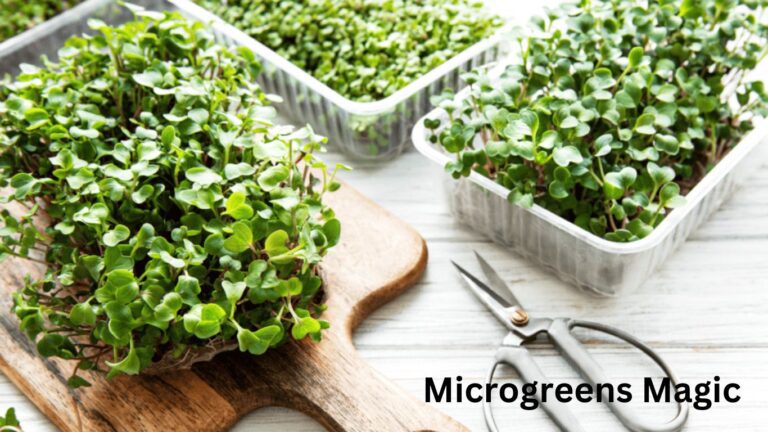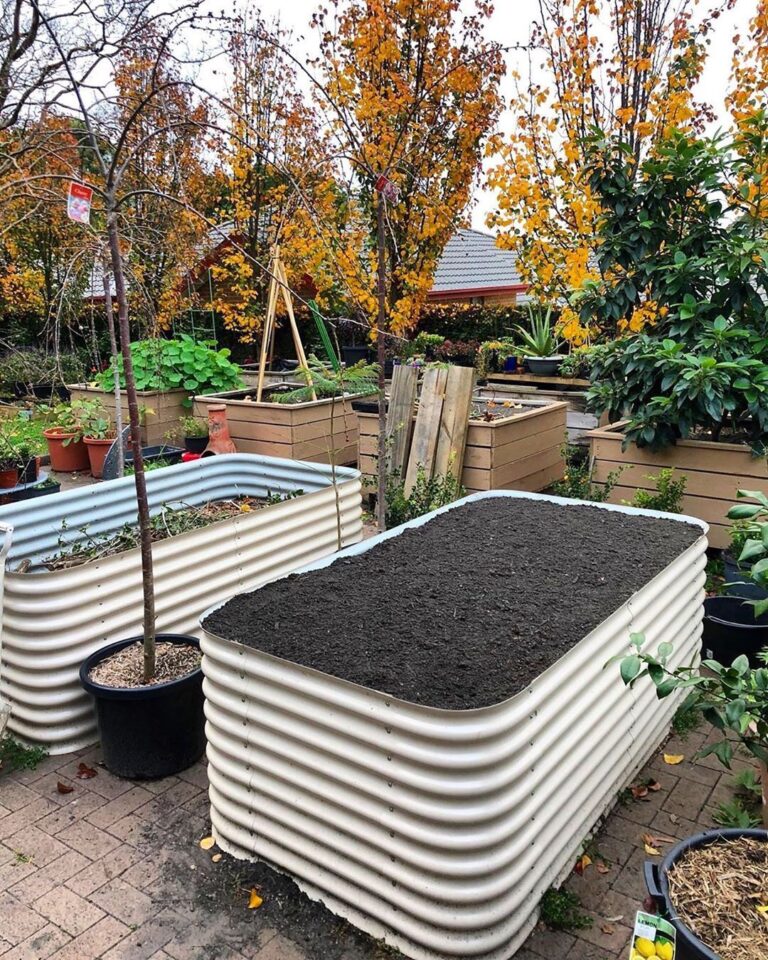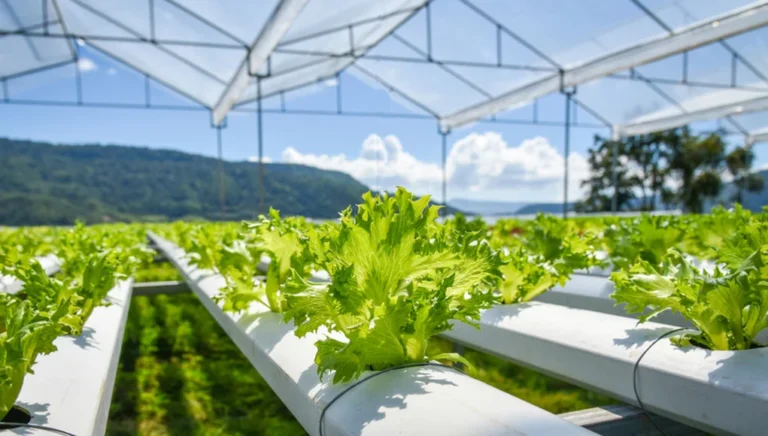Best RO System for hydroponics: A Review of the Top Products for Reverse Osmosis Water Filtration
Table of Contents
Different Types of Reverse Osmosis Systems
Reverse osmosis systems are an essential tool for those seeking to improve the quality of their water. There are several different types of reverse osmosis systems available on the market, each with its own unique features and advantages. One popular type is the under-sink reverse osmosis system, which is designed to fit conveniently and discreetly beneath your kitchen sink. These systems typically consist of a sediment filter, a carbon filter, a reverse osmosis membrane, and a post-filter.

They are capable of removing a wide range of contaminants, including chlorine, sediment, heavy metals, and harmful chemicals. Another type of reverse osmosis system is the whole-house reverse osmosis system. As the name suggests, these systems are designed to filter water for the entire household, ensuring that every faucet and showerhead delivers clean and purified water. They typically consist of multiple stages of filtration, including sediment filters, carbon filters, and reverse osmosis membranes. This type of system is particularly beneficial for those living in areas with poor water quality or with specific contaminants in their water supply.
When choosing a reverse osmosis system, there are several key factors to consider. Firstly, it is important to determine the size and capacity of the system that will best suit your needs. Consider the number of people in your household and the average water consumption to ensure that the system can provide an adequate supply of purified water. Additionally, it is important to consider the quality of the filters and membranes used in the system. Look for systems that use high-quality materials and have a good reputation for durability and performance. Other factors to consider include the ease of installation, maintenance requirements, and the overall cost of the system. By carefully considering these factors, you can choose a reverse osmosis system that meets your needs and ensures the highest quality of purified water for you and your family.
Key Factors to Consider When Choosing a Reverse Osmosis System for hydroponics
When it comes to choosing a reverse osmosis system, there are several key factors to consider. First and foremost, you need to evaluate the quality of the water in your area. This includes understanding the contaminants present in your water supply and their concentrations. Conducting a water quality test or consulting with a professional can help you identify the specific contaminants that need to be addressed by the reverse osmosis system.
Another important factor to consider is the system’s capacity and efficiency. Reverse osmosis systems come in varying sizes, and it’s essential to choose one that can meet the demands of your household or business. Consider factors such as flow rate, production capacity, and recovery rate when evaluating different models. Additionally, pay attention to the system’s waste-water ratio, as some systems are more efficient than others in terms of water usage. Overall, selecting a system that can effectively purify your water while also being efficient in its operation is crucial.
Understanding the Reverse Osmosis Process
Reverse osmosis (RO) is a highly effective water filtration process that is commonly used to improve the quality and taste of drinking water. The process of reverse osmosis involves the use of a semipermeable membrane to remove impurities and contaminants from the water, leaving behind clean, purified water.
During the reverse osmosis process, water is forced through the membrane under pressure, while the impurities and contaminants are left behind. The semipermeable membrane is specifically designed to allow only water molecules to pass through, while blocking the larger molecules of contaminants. This ensures that the water that emerges from the process is free from harmful substances such as bacteria, viruses, chlorine, fluoride, heavy metals, and other impurities.

One of the key advantages of reverse osmosis is its ability to remove a wide range of contaminants, resulting in clean and safe drinking water. It is particularly effective in removing dissolved salts, minerals, and chemicals, which can give water an unpleasant taste or odor. Reverse osmosis technology can reduce the presence of these contaminants by up to 99%, resulting in better tasting water that is not only safe to drink but also ideal for cooking, brewing coffee or tea, and preparing baby formula.
However, it is important to note that while reverse osmosis is a highly effective water filtration process, it does have some limitations. The process can be quite slow, as it requires time for the water to pass through the semipermeable membrane. Additionally, reverse osmosis systems can waste a significant amount of water during the filtration process, as only a portion of the water is used, while the rest is flushed away as waste. It is important to consider these factors when choosing a reverse osmosis system, as well as other key factors such as the system’s capacity, maintenance requirements, and cost.
Pros and Cons of Reverse Osmosis Water Filtration
| Pros | Cons |
|---|---|
| Removes most contaminants from water | Removes healthy minerals from water |
| Improves taste and odor of water | Wastes some water |
| Requires little maintenance | Slower filtration process compared to other options |
| Relatively cheaper compared to other water filtration methods | Filter cartridges and semipermeable membrane can clog easily |
| Energy efficient and does not require electricity to function | Filter cartridges and semipermeable membrane need to be replaced more often |
Reverse osmosis (RO) water filtration systems have gained popularity for their ability to provide clean and purified water. One of the main advantages of using an RO system is its highly effective filtration process. RO membranes are capable of removing a wide range of contaminants, including bacteria, viruses, heavy metals, chemicals, and suspended solids. This ensures that the water you consume is free from harmful substances, making it safer and healthier for you and your family.
Additionally, RO water filtration systems produce water that is generally of superior taste and quality. The removal of impurities leads to a cleaner and fresher taste, devoid of any unpleasant odors or flavors. Many people find the purified water from an RO system to be more enjoyable, especially when compared to tap water or other filtration methods. This can be particularly beneficial for individuals who are sensitive to certain tastes or who simply prefer the taste of pure water.
However, it is important to consider the potential downsides of reverse osmosis water filtration as well. One notable drawback is the relatively slow filtration process compared to other methods. Reverse osmosis systems can take longer to produce filtered water due to the intricate membrane-based filtration process. This may be a factor to consider if you have a large household or require a significant amount of filtered water on a daily basis. Additionally, the process can result in a considerable amount of water wastage, as a portion is typically discarded as “reject water” during filtration. This can lead to higher water bills and may not be the most sustainable option in areas with limited water supply.
Comparing RO Systems: Performance, Efficiency, and Maintenance
When comparing RO systems, it is essential to assess their performance, efficiency, and maintenance requirements. The performance of an RO system refers to its ability to remove contaminants and produce clean, purified water. This can be evaluated by examining the system’s rejection rate, which indicates the percentage of contaminants rejected by the filtration process. A higher rejection rate signifies better performance and more efficient removal of impurities.
Efficiency is another crucial factor to consider when comparing RO systems. Efficiency refers to the amount of wastewater generated during the filtration process. Some RO systems are designed to be more water-efficient, minimizing the amount of wastewater produced and maximizing the utilization of available water. It is important to choose a system that strikes a balance between water efficiency and performance to ensure optimal results.
Additionally, it is necessary to consider the maintenance requirements of the RO system. This includes the frequency of filter replacements, membrane cleaning, and system sanitization. Evaluating the maintenance needs of different systems can help determine the long-term costs and efforts associated with their upkeep. Choosing a system with easily accessible and replaceable filters can simplify maintenance and ensure consistent performance over time.
By carefully examining the performance, efficiency, and maintenance requirements of RO systems, individuals can make informed decisions and select the most suitable option for their specific needs. Understanding these factors not only ensures the delivery of clean, purified water but also helps maximize the lifespan and effectiveness of the chosen RO system.
Top Features to Look for in a Reverse Osmosis System
When purchasing a reverse osmosis system, it is essential to consider certain key features that will ensure optimal performance and efficient water filtration. One of the top features to look for in a reverse osmosis system is a high-quality membrane. The membrane is at the heart of the system, responsible for removing a wide range of contaminants, including dissolved solids, chemical pollutants, and harmful microorganisms. Look for a system that utilizes a durable and efficient membrane, preferably one made with advanced technology that maximizes filtration capacity and lifespan.
Another important feature to consider is the system’s filtration stages. A multi-stage filtration process is highly recommended as it allows for superior contaminant removal. Look for systems that incorporate pre-filters to remove sediments, carbon filters to eliminate chlorine and other chemicals, and a post-filter to polish the water and enhance its taste. This comprehensive filtration approach ensures that your reverse osmosis system provides you with clean, pure, and refreshing drinking water every time. So, when researching and comparing different reverse osmosis systems, be sure to prioritize these key features for the best results.
The Importance of Water Quality Testing for RO Systems
Water quality testing is an essential step in maintaining the efficiency and effectiveness of your reverse osmosis (RO) system. Whether you are a homeowner or a business owner, ensuring the purity and safety of your drinking water is crucial for the well-being of yourself, your family, or your customers.
Regularly testing the quality of water produced by your RO system allows you to identify any potential issues or contaminants that may be present. This includes monitoring the levels of dissolved solids, minerals, bacteria, viruses, and other harmful substances. By analyzing the results of water quality tests, you can make informed decisions about whether additional filtration or treatment is necessary to further enhance the safety and taste of your drinking water. Ultimately, water quality testing provides peace of mind by ensuring that your RO system is functioning optimally and delivering the high-quality water you and your loved ones deserve.
Exploring the Best RO System Brands on the Market
| Brand | Type | Capacity | Filtration Stages | NSF Status | Installation | Warranty |
|---|---|---|---|---|---|---|
| AquaTru | Countertop | 1 gallon tank | 4 | Certified | Countertop | N/A |
| Whirlpool | Under-sink | N/A | 3 | N/A | Under-sink | N/A |
| Waterdrop G3P600 | Tankless | N/A | 8 | N/A | Under-sink | N/A |
| APEC Water Systems ROES-50 | Under-sink | 4-gallon tank | 5 | Certified | Under-sink | 1 year |
| iSpring RCC7AK | Under-sink | 75 GPD | 6 | Certified | Under-sink | 1 year |
| Waterdrop G3P800 | Tankless | N/A | N/A | N/A | Under-sink | N/A |
| NU Aqua Tankless 600 | Tankless | N/A | N/A | N/A | Under-sink | 120 day home trial guarantee |
| NU Aqua 7 Stage | Under-sink | N/A | 7 | Certified | Under-sink | N/A |
When it comes to choosing a reverse osmosis (RO) system, there are several top brands on the market that are known for their quality and performance. One such brand is ABC Water Systems, which has been a trusted name in water filtration for over 25 years. Their RO systems are known for their efficient removal of impurities, providing clean and great-tasting water for households.
Another reputable brand is XYZ Filters, which offers a wide range of RO systems suitable for different budgets and needs. Their systems are known for their durability and long lifespan, ensuring that you get the most out of your investment. XYZ Filters also provides excellent customer support, making them a popular choice among consumers.
It is worth mentioning DEF Pure Water, a brand that has gained recognition for its innovative technologies in reverse osmosis filtration. DEF Pure Water systems are known for their high flow rates and water efficiency, ensuring that you have a consistent supply of purified water.
These are just a few of the best RO system brands on the market, and each brand offers its unique features and advantages. When selecting an RO system, consider factors such as water quality, system capacity, maintenance requirements, and budget to find the brand that best suits your needs. Remember to choose a brand with a proven track record and positive customer reviews to ensure optimal performance and satisfaction.
How to Install a Reverse Osmosis System
Installing a reverse osmosis system may seem like a daunting task, but with the right tools and guidance, it can be a straightforward process. Before beginning the installation, be sure to turn off the water supply to your home and read through the manufacturer’s instructions carefully.

First, locate a suitable location for your RO system. Ideally, it should be near a cold water line and drain. This will make the installation process smoother and more efficient. Once you’ve found the perfect spot, you’ll need to mount the bracket that will hold the RO system in place. Ensure it is securely fixed to avoid any accidents or damage.
Next, you’ll need to connect the necessary plumbing. Attach the water supply line to the inlet valve of the RO system and the drain line to the drain saddle or plumbing fixture. Be sure to tighten any connections carefully and check for any leaks before proceeding. Once the plumbing is set up, you can connect the system’s pre-filter and post-filter cartridges in their designated locations. Remember to flush the filters with water to remove any loose particles before installation.
With the plumbing and filters in place, it’s time to connect the system to a dedicated faucet. Take care to follow the manufacturer’s instructions as different systems may have variations in their installation process. Lastly, turn on the water supply and check for any leaks or irregularities. It’s important to monitor your new RO system for the first few days to ensure it is functioning at its best.
Maintaining and Troubleshooting Your RO System
Regular maintenance and troubleshooting are crucial for ensuring the optimal performance and longevity of your reverse osmosis (RO) system. By following these steps, you can keep your system running smoothly and address any issues that may arise.
First and foremost, it is important to regularly inspect and replace the pre-filters in your RO system. These filters play a vital role in removing larger particles and impurities from the water before it reaches the RO membrane. Over time, these filters can become clogged and affect the system’s efficiency. By replacing them at regular intervals, typically every 6-12 months, you can prevent any potential blockages and maintain the system’s effectiveness. Additionally, be sure to check for any leaks or damaged fittings in the system. Examining the tubing and connections for any signs of wear or deterioration can help you identify and address potential issues before they worsen.
Another key aspect of maintaining your RO system is performing regular membrane cleaning and sanitization. The RO membrane is a critical component that filters out impurities and contaminants from the water. However, over time, the membrane can accumulate deposits and bacteria, which can impact its performance. It is recommended to follow the manufacturer’s instructions for cleaning and sanitizing the membrane, typically utilizing specialized cleaning solutions. Regularly flushing the membrane and performing this maintenance procedure, usually once a year, can help prolong its lifespan and ensure the system continues to produce high-quality filtered water.
In the event of any troubleshooting, it is important to identify the source of the problem promptly. Issues such as low water pressure, excessive noise, or inadequate water production may indicate a problem with the membrane, pump, or other components. Checking the system’s pressure gauges, valves, and flow restrictors can help pinpoint the issue. If troubleshooting efforts do not resolve the problem, it is advisable to consult a professional or the manufacturer for further assistance. They can provide guidance and support in diagnosing and fixing more complex issues that may arise with your RO system.
By regularly maintaining and promptly troubleshooting your RO system, you can ensure that it continues to provide you with clean and great-tasting water for many years to come.
Addressing Common Concerns about Reverse Osmosis Water
Reverse osmosis water filtration is gaining popularity as more people become concerned about the quality of their drinking water. However, some common concerns may arise when considering the use of reverse osmosis water. One concern is the removal of essential minerals from the water during the filtration process. While it is true that reverse osmosis removes minerals, research has shown that the contribution of minerals from drinking water to our overall nutrient intake is minimal. Our diet is the primary source of essential minerals, and we can still obtain these minerals from other dietary sources, such as fruits, vegetables, and supplements if needed.
Another concern is the wastage of water during reverse osmosis filtration. It is true that reverse osmosis systems produce a certain amount of wastewater during the filtration process. However, it is important to note that the wastewater can be redirected and reused for other purposes, such as watering plants or cleaning. Additionally, the water efficiency of reverse osmosis systems has significantly improved over the years, with some newer models boasting a high ratio of purified water to wastewater. By considering these factors, concerns about mineral removal and water wastage can be addressed and put into perspective when deciding on the use of reverse osmosis water filtration.
Tips for Extending the Lifespan of Your RO System
To ensure the longevity and optimal performance of your reverse osmosis (RO) system, it is essential to follow a few key tips. By implementing these practices, you can extend the lifespan of your RO system and continue to enjoy the benefits of clean and refreshing water in your home or business.
First and foremost, regular maintenance is vital for the longevity of your RO system. This includes replacing filters according to the manufacturer’s instructions and schedule. Over time, filters can accumulate sediments and contaminants, which can reduce the efficiency of the system and potentially impact water quality. By staying on top of filter replacements, you can maintain the system’s effectiveness and prevent any potential issues.
Additionally, it is important to regularly clean and sanitize your RO system. Over time, mineral deposits and bacterial growth can occur within the system, particularly on the membrane. Periodic cleaning using approved RO system cleaners can help remove these build-ups and ensure the system operates at its full potential. Your manufacturer’s guidelines will provide specific instructions on how to clean and sanitize your system properly.
Implementing these maintenance practices and regular cleaning will not only help extend the lifespan of your RO system but also ensure that it continues to produce high-quality filtered water for your needs. By keeping up with these simple tasks, you can enjoy the benefits of purified water for years to come.
Enhancing the Taste and Quality of RO Filtered Water
One of the key benefits of using a reverse osmosis (RO) system is the improvement in taste and quality of filtered water. RO systems are specifically designed to remove impurities, contaminants, and mineral deposits from water, resulting in a cleaner and fresher taste. The filtration process effectively eliminates unpleasant odors and flavors, providing you with high-quality water for drinking and cooking purposes.
In addition to the purification process, there are measures you can take to further enhance the taste and quality of your RO filtered water. One option is to incorporate mineralization techniques to add essential minerals back into the water. This can be done by using specialized mineral cartridges or alkaline filters that infuse the water with minerals like calcium and magnesium, promoting a more balanced pH level and improving taste. It is important to note that while these techniques can enhance the flavor of water, they are optional and may not be necessary for everyone’s preferences.
By following these tips and incorporating them into your RO system, you can ensure the highest quality and best-tasting water possible. Remember, regular maintenance and periodic filter replacement is essential for optimal performance.
Why does reverse osmosis water sometimes have a bland taste?
Reverse osmosis filtration removes minerals from water, which can contribute to its taste. However, some people prefer the taste of mineral-rich water.
Can I add minerals back to reverse osmosis water to improve its taste?
Yes, you can add minerals back to reverse osmosis water using mineral cartridges or by mixing it with mineral-rich water. This can enhance the taste and improve the overall quality.
Is it safe to drink reverse osmosis water without adding minerals?
Yes, reverse osmosis water is generally safe to drink even without minerals. It undergoes a thorough filtration process, removing contaminants and impurities.
Can I use reverse osmosis water for cooking and making coffee?
Absolutely! Reverse osmosis water is excellent for cooking and making coffee as it lacks impurities and minerals that could affect the taste of your dishes or beverages.
Does reverse osmosis remove beneficial minerals from the water?
Yes, reverse osmosis filtration removes both harmful and beneficial minerals from the water. However, the overall impact on your mineral intake from drinking water is minimal compared to the minerals obtained from food.
How can I improve the taste of reverse osmosis water?
You can enhance the taste of reverse osmosis water by adding a squeeze of lemon or lime juice, a few drops of flavored extracts, or infusing it with fruits like berries or cucumber.
Can I use reverse osmosis water in my aquarium?
While reverse osmosis water is very pure, it lacks minerals that are essential for aquatic life. If using it in an aquarium, it’s recommended to remineralize the water to create a suitable environment for fish and other aquatic organisms.
Does reverse osmosis remove chlorine from water?
Yes, reverse osmosis filtration effectively removes chlorine, along with other contaminants such as heavy metals, pesticides, and bacteria.
Is reverse osmosis water better for hydrating the body?
Reverse osmosis water is an excellent choice for hydration as it is free from contaminants. However, it’s important to note that the body obtains most of its hydration from the foods we eat rather than just water.
Can I use reverse osmosis water for watering plants?
While reverse osmosis water is purified, it lacks the minerals that plants require for healthy growth. It’s advisable to use tap water or mix reverse osmosis water with tap water to provide the necessary minerals for your plants.

Suyash Dhoot, editor at SouthElMonteHydroponics.com, is a pioneering force in hydroponics. His expertise spans nutrient solutions and cutting-edge technology. Through meticulous editing, he elevates the site to a beacon of knowledge, offering invaluable insights. Dhoot’s dedication shapes a greener, more efficient future for agriculture.

